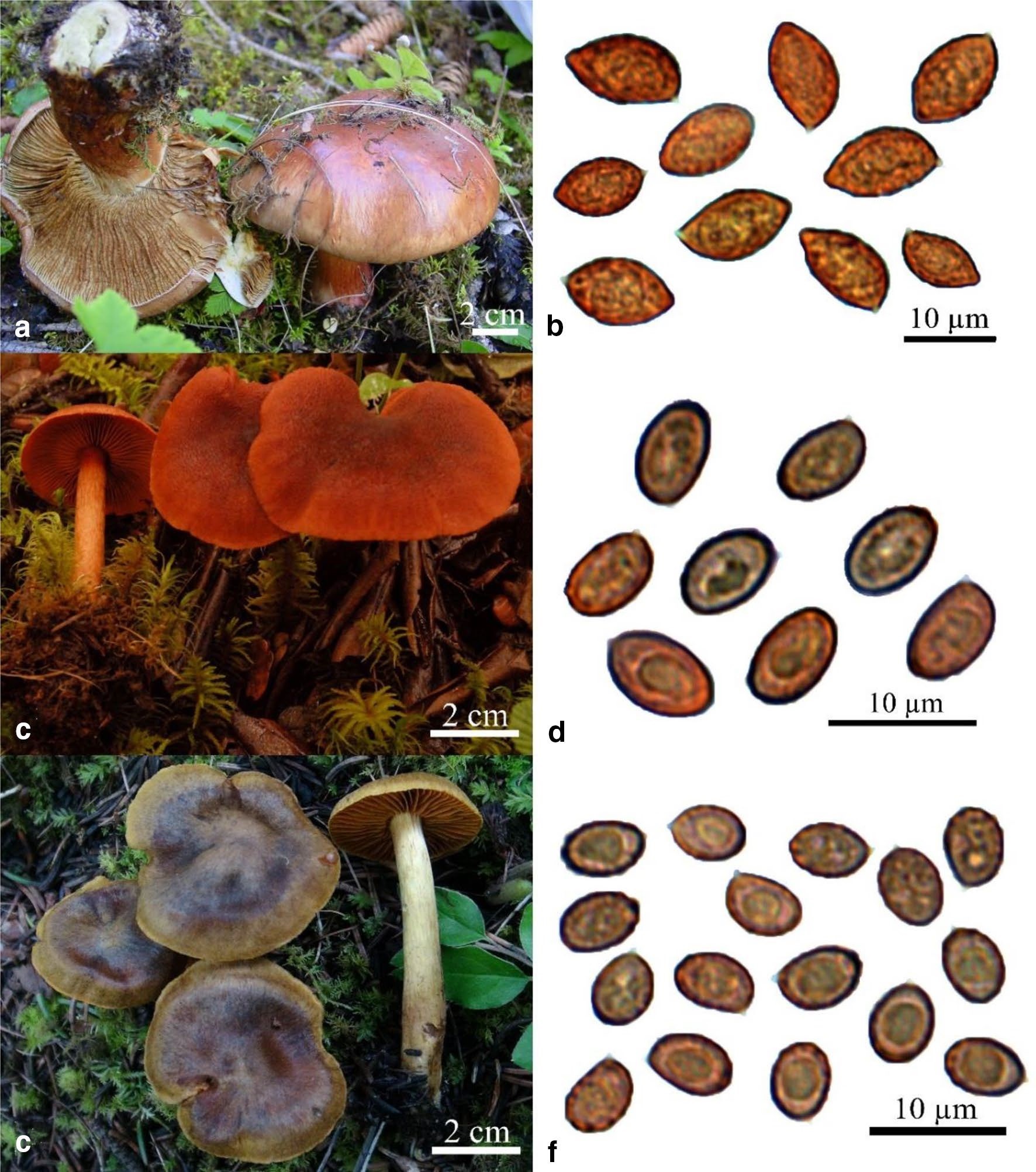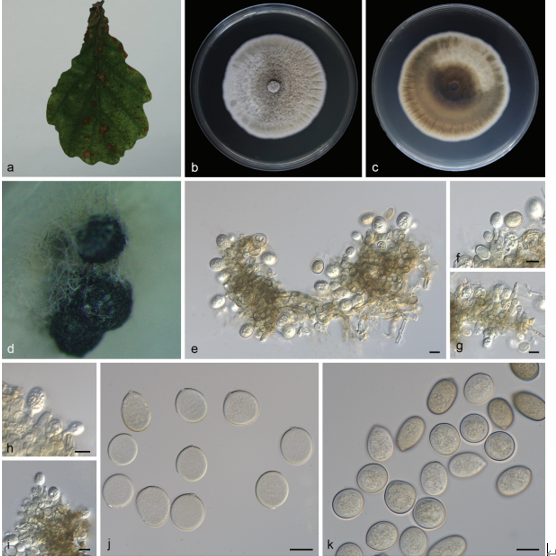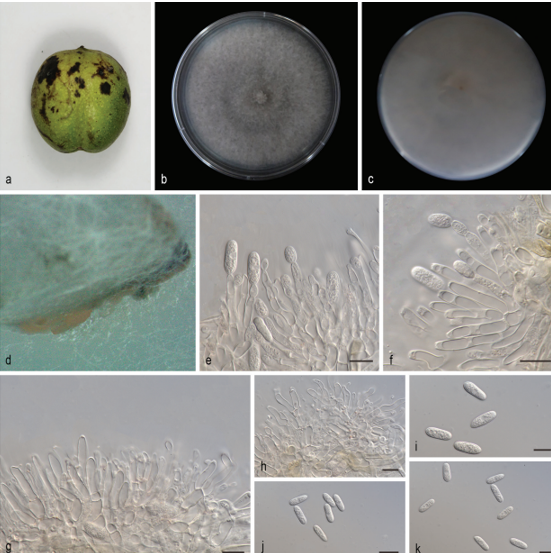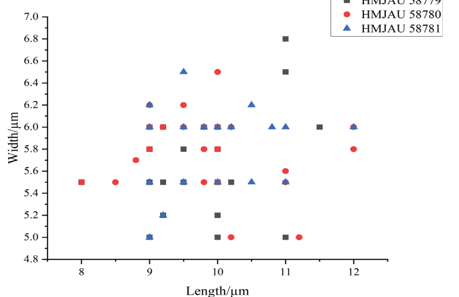Cortinarius subsanguineus T.Z. Wei, M.L. Xie & Y.J. Yao 2020
Fungal Name number: FN 570648; Facesoffungi number: FoF 06102
Holotype: CHINA, Yunnan Province, Xianggelila County, Bitahai, alt. 3700 m, on ground in mixed forest with Picea sp. and Quercus aquifolioides, 12 August 2008, Tie-Zheng Wei, Xiao-Qing Zhang & Fu-Qiang Yu 134 (HMAS250503, holotype); Xizang Autonomous Region, Bomi County, Gawarong Tample, 29°47′44.56″ N, 95°41′53.87″ E, alt. 3680 m, on ground in mixed forest with Picea sp. and Quercus aquifolioides, 10 September 2014, Tie-Zheng Wei, Jian-Yun Zhuang, Xiao-Yong Liu & Hao Huang 4949 (HMAS253491); Milin County, Nanyigou, 29°02′11.59″ N, 94°14′29.26″ E, alt. 3166 m, on ground in mixed forest with Picea sp. and Quercus aquifolioides, 20 September 2015, Tie-Zheng Wei & Bin-Bin Li 6542 (HMAS275034).
Morphological description
Basidiocarps gregarious. Pileus 2.5–6 cm diam, firstly hemispherical, then convex, finally convex-applanate to applanate, slightly umbonate at center; margin decurrent to straight; surface dull orange-red (Vinaceous-Rufous), rust red (Dragon’s-blood Red) to red (Scarlet) to with persistent dark red (Ox-blood Red) minute floccose squamules from universal veil, margin paling to orange-red (Coral Red to Orange Rufous). Lamellae adnate to emarginate-adnate, up to 5 mm wide; red (Scarlet) when young, rust red (Dragon’s-blood Red) when mature, close, with lamellulae. Stipe 5.0–10.0 × 0.5–0.9 cm, central, cylindrical, base thickening to1.5 cm diam; surface reddish orange (orange Rufous) when young, with rust tint when mature, with rust red floccules from universal veil; rough, solid to soft. Cortina reddish at first, finally rust red from the mature basidiospores. Context up to 4 mm thick at center, pale red to dull red, fleshy. Smell not distinctive. Taste mild. Spore print rust brown. Chemical reaction with 20% KOH blackish red at all parts. Fluorescence reaction under ultraviolet light indistinct. Basidiospores (6–)6.5–8(–9) × (4–)4.5–5.5(–5.7) μm, Q = 1.4–1.6 (x̅ = 1.5); ellipsoid, yellow–brown to brown, minutely to moderately verrucose. Basidia 26–31 × 6–8 μm, clavate, thin-walled, mostly subhyaline, with four sterigmata. Lamella margin heterogeneous, with sterile cells, 20–26 × 5–7 μm, clavate, subhyaline, thin-walled. Cheilocystidia and pleurocystidia none. Pileipellis of subcylindrical hyaline, 5–15 μm diam, reddish brown to rust brown. Clamp connections present.
Habitat: On ground in mixed forest with Picea sp.
Distribution: In China.
GenBank Accession: ITS: MK411450, MK411449, MK411451.
Notes: Cortinarius subsanguineus is a member of section Sanguinei Kühner & Romagn. ex M.M. Moser (Subgenus Dermocybe) and mainly characterized by its orange-red pileus and stipe. Phylogenetically, C. subsanguineus forms a distinct terminal lineage and shows a close relationship with a few red species, e.g. C. harrisonii Ammirati, Niskanen & Liimat., C. neosanguineus Ammirati, Liimat. & Niskanen, C. puniceus P.D. Orton, C. sanguineus (Wulfen) Gray, C. sierraensis (Ammirati) Ammirati, Niskanen & Liimat. and C. vitiosus (M.M. Moser) Niskanen, Kytöv., Liimat. & S. Laine (Fig. 81). However, the ITS sequences of C. subsanguineus differ from the other species in the phylogenetic tree by at least 7 substitutions and indel positions. C. neosanguineus (Niskanen et al. 2013), C. puniceus (Bidaud et al. 1994; Niskanen et al. 2012; Grupo Ibero-insular de Cortinariologos 2014), C. sanguineus (Bidaud et al. 1994; Breitenbach and Kränzlin 2000; Bellù et al. 2004; Niskanen et al. 2012, basidiocarps of C. neosanguineus (Niskanen et al. 2013) and 2013; Soop 2018) and C. vitiosus (Niskanen et al. 2012) do C. puniceus (Bidaud et al. 1994; Niskanen et al. 2012; Grupo not have orange-tinged basidiocarps, and furthermore the Ibero-insular de Cortinariologos 2014) are purplish-tinged.
Reference: Hai‑Sheng Yuan1,2· Xu Lu1,2 · Yu‑Cheng Dai3 ·

New Cortinarius species from China. a, b. C. sinensis (HMAS 99105, holotype). a Basidiocarps. b Basidiospores. c, d C. subsanguineus (HMAS 250503, holotype). c Basidiocarps. d Basid- iospores. e, f. C. xiaojinensis (HMAS 274355, holotype). e Basidiocarps. f Basidiospores. Scale bar: a,c,e=2 cm, b,d,f=10 µm









